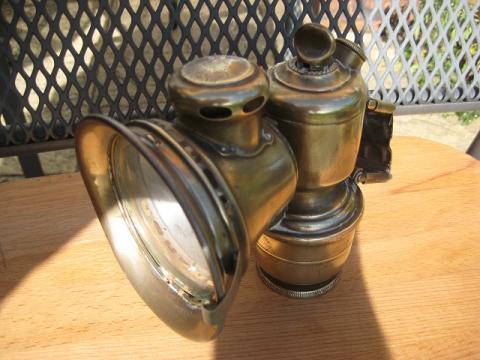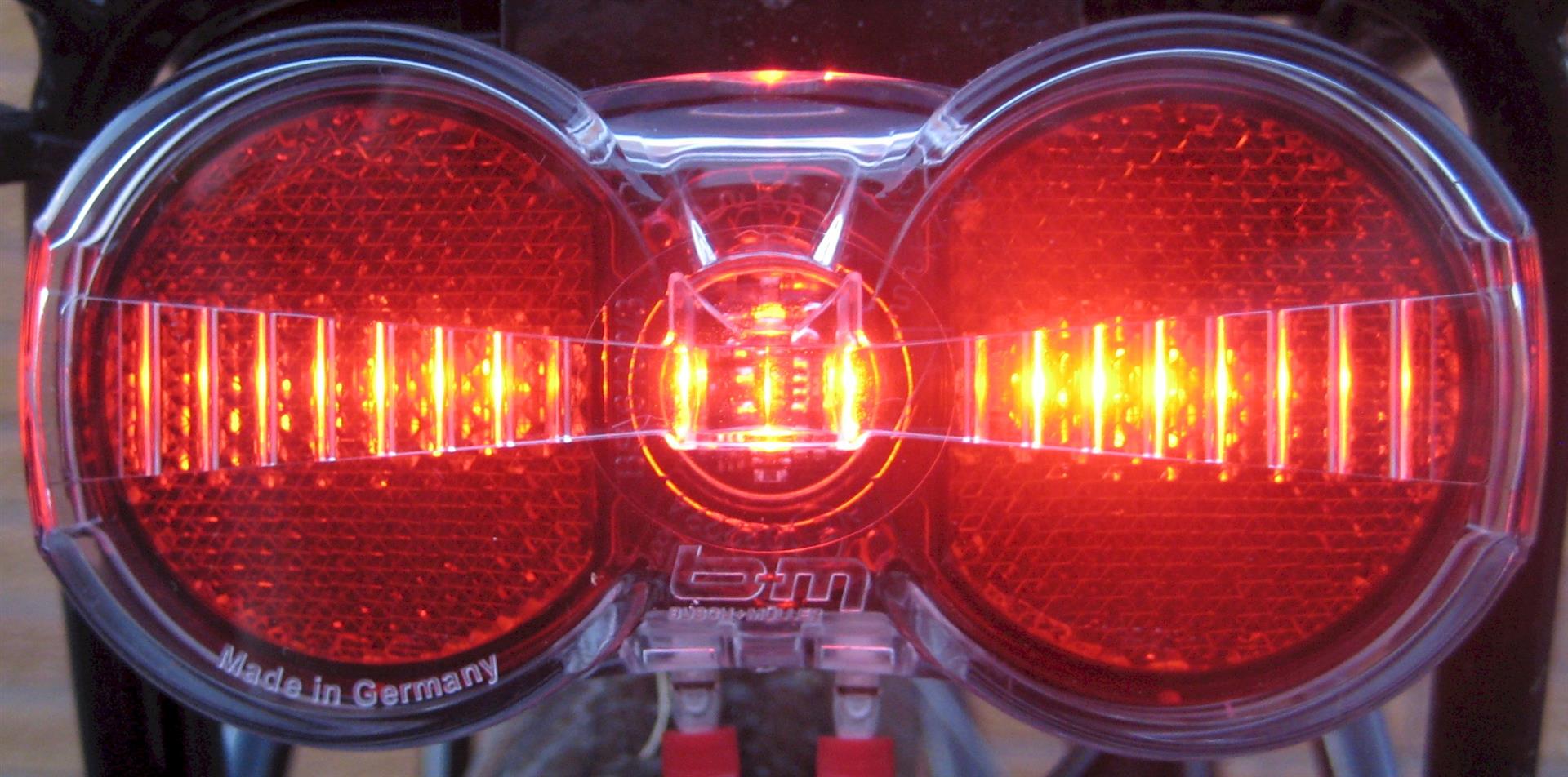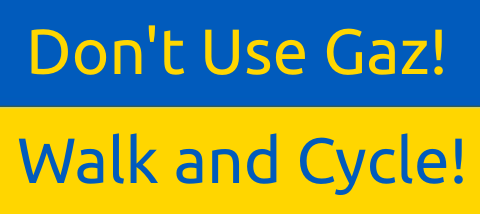
It's that time of year when cyclists start to think about coping with less daylight. You have a human-powered vehicle, so why not add some human-powered lighting and never have to faff about with bike light batteries again? You can do this with a dynamo lighting system. I first switched to dynamo lights a few years ago, and I've never looked back.
For many people, the term "dynamo lighting" conjures up an image of struggling down the road to the accompaniment of a shrill whining wondering how it is such a dim, flickering light demands so much effort from your leg muscles.
The concept of a light that goes out when you stop in the middle of a busy junction doesn't inspire much confidence either, and every cyclist has heard of someone who shot down a steep hill one night and burned out their dynamo lights.
In fact all these difficulties only occur if you have outdated lights and a really awful, incorrectly fitted dynamo. The reality is that dynamo lighting has almost no effect on the effort required to pedal a bike, and the beam will be bright without blinding all oncoming traffic. On that subject, let's just take a slight detour.
Many cycle lights project light in a cone. If you point the light straight ahead, half the light is wasted lighting up the night sky, and blinds any oncoming road user for a considerable distance. Tilting the light downwards doesn't help greatly, because that just illuminates a small area very brightly, so your eyes adjust to that and anything outside that area appears to be very poorly illuminated. All but the least powerful dynamo headlights shape the beam so that all the light is directed as evenly as possible on to the road ahead; very little is wasted lighting up the night sky and blinding others. Such a beam is very effective for seeing by.
However, this wasn't the feature that got me investigating dynamo lighting. I was fed up with range anxiety caused by batteries. I was fed up with trying to ensure I had a set of batteries ready for action. I was fed up with lights that wouldn't stay on because the battery contacts were corroded. I was fed up with mounting systems that broke or didn't work very well (many of my bike lamps have fallen off and been smashed to bits, sometimes by the car behind). I was fed up with having to remove them both to prevent theft and avoid the need to lug around heavy batteries. The net result was that I usually didn't have a working set of lights with me when I needed them, and of course when I did have them they were pretty hopeless for seeing where I was going on Birmingham's unlit cycle routes. The consequence of that was that I hated riding my bike at night, and largely avoided doing so.
It was whilst poking around David Hembrow's Dutch Bike Bits website that I discovered there was a better way. I learned that that dynamo lights were not dim and hard work, and neither did they go out every time one stopped. One can spend quite a lot on bicycle lighting, and I didn't want to spend a whole load of money on something I wasn't sure about in order to do something I disliked doing. So I hedged my bets a little, and bought from David a modestly priced but quite well specified Union headlight, a cheap Basta rear light, and the cheaper of the dynamos David supplies. I fitted the system, and rapidly became a convert to dynamo lighting. Suddenly I could see where I was going at night, and I felt much safer (oncoming motorists would respect my right of way). It was not long before I was routinely cycling in the dark. In addition, if the daylight becomes rather gloomy, I have no qualms about switching on my lights. So the following year when I met David in person, I bought from him the better of the two dynamos he sells, and then I reworked the wiring on my bike to make it neat and tidy. However, my original dynamo has recently been put to work on another bike, so I thought it was time to pass on what I have learned.
Regulations and Staying Legal

The British cycle lighting regulations are a complete mess, but thankfully our membership of the European Union means that we can legally use lighting that conforms to the superior StVZO German regulations. These have in fact become the de facto European standard (we're not the only European country that has poorly defined bicycle lighting regulations). So whatever you buy, make sure it conforms to the German standard. In case you're wondering, StVZO stands for Straßenverkehrs-Zulassungs-Ordnung. That mouthful alone should make you wish the UK had maintained its lead in the cycling industries. It translates as the considerably less exotic Road Traffic Licensing Regulations.
Note that StVZO does not permit a flashing light, but be aware that it is very difficult to judge distance from a flashing light, so you are far better off with an StVZO compliant light. If a motorist doesn't see you whilst you are riding with the sort of lights described in this blog post, it's because they weren't looking. A flashing bike light wont protect you from someone who is absorbed in talking to their passenger or adjusting the overly complex controls on their in-car entertainment system. A bright blue flashing light that illuminates their car interior might get their attention, but that's not legal for most of us.
Technology
Bicycle dynamos are not dynamos at all. Technically a dynamo is an electrical generator that uses a commutator to produce a direct current (DC). A bicycle dynamo is in fact a magneto, a type of alternator that uses permanent magnets on the rotor. At any given speed it produces a constant alternating current (AC), which it drives into whatever it is connected to (known as the load). If the load isn't very large, the voltage from a dynamo can reach alarming proportions, large enough to burn out traditional incandescent bulbs. Modern electronics renders that a thing of the past by diverting the current into something that can dissipate the excess energy. However, the output is still AC, and the voltage will vary with both speed and load, so don't be tempted to connect your phone, say, to a bicycle dynamo in the hope that it will recharge the battery. If you want to do that, look for something designed for that purpose, such as this Axa headlamp.
Traditionally the most common type of bicycle dynamo is the bottle dynamo. This is driven from the wheel rim or tyre and offers about 70% efficiency. They work very well if of reasonable quality and when fitted correctly. They are very handy for use with an existing wheel, and on a sportier bike they have the advantage that they are not too heavy and can be disengaged completely. Finally, one can replace the wheel independently of the dynamo. However, Britain having created conditions that caused its once great cycle industry to all but die, dynamo lighting technology is driven by how bikes are used on the continent and in Japan. There most bikes are used for transport. Until recently, the StVZO regulations required that all bikes above 10kg sold in Germany had to be provided with dynamo lighting, which of course drove the market forward strongly. On a transport bike the additional weight of a hub dynamo compared with a bottle dynamo is not an issue, and neither is the residual drag when the lights are off, so in that market the otherwise superior hub dynamo reigns supreme. Continental bikes are increasingly fitted with hub dynamos in the factory. And now in this country both the Brompton Hire bikes and the Big Birmingham Bikes have hub dynamos. The reason is simply that they work better and they are a neat, elegant solution. However, since this blog post is about my retrofitting dynamo lighting systems to bikes with working wheels, it does not cover hub dynamos. Neither does it describe any of the other, more niche technologies.
The better dynamo lights all have a stand light (or in German and Dutch, Standlicht) feature. This keeps the light illuminated for a few minutes after you stop. Headlights typically dim the light to prolong the stand light time. This has been made practical by LED lighting and an electronic component known as a supercapacitor, though in the past the same was achieved on luxury bikes with a couple of chunky NiCd batteries mounted in a carrier on the frame and charged from the dynamo. My mother had such a system on her British-made Rudge, which also had a hub dynamo. Had we not stuck doggedly with the motor city concept, perhaps this blog post would feature rather less German and Dutch. Then again, it probably wouldn't even exist, as we would all be riding around on bikes with factory-fitted dynamo lighting and thinking nothing of it, just like the Germans and the Dutch.
Nordlicht Dynamo
Axa HR Traction Dynamo
Axa Cable Management

Setting the Correct Angle
Büchel Secu Sport S
Secu Sport Headlamp Wiring

Crimping a Spade Connector
Rear Light Mounting
Rear Light Wiring
Busch & Müller Toplight Flat S Plus

Union Headlamp

Basta Ray Steady
Headlamp Angle
Asssistant Mechanic



